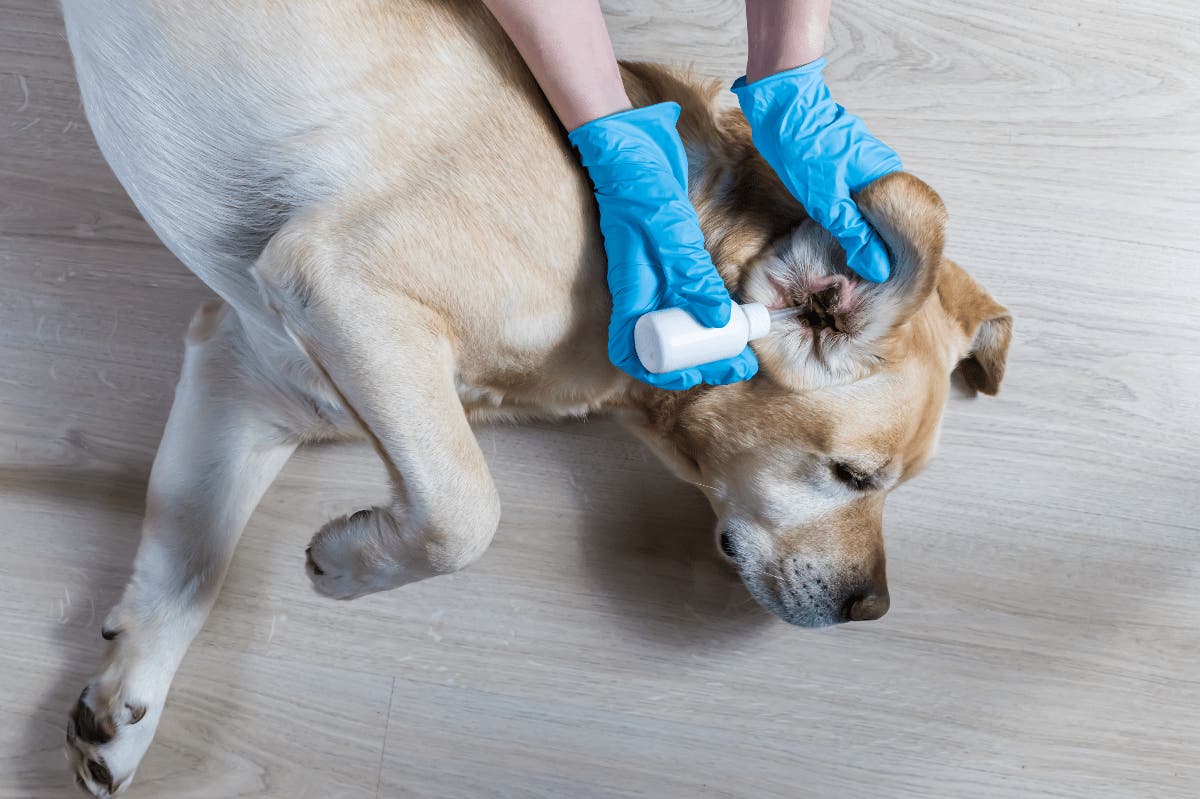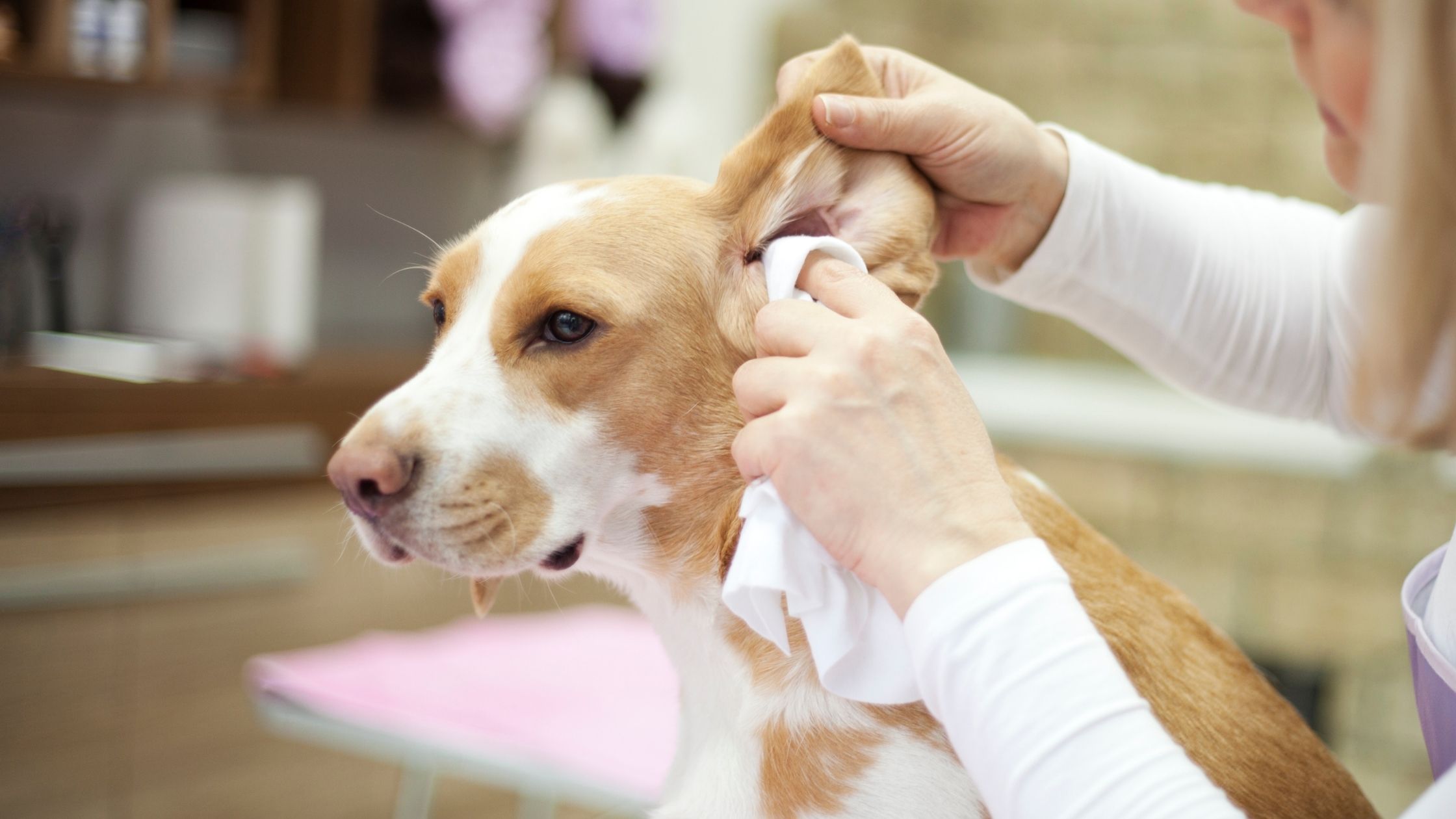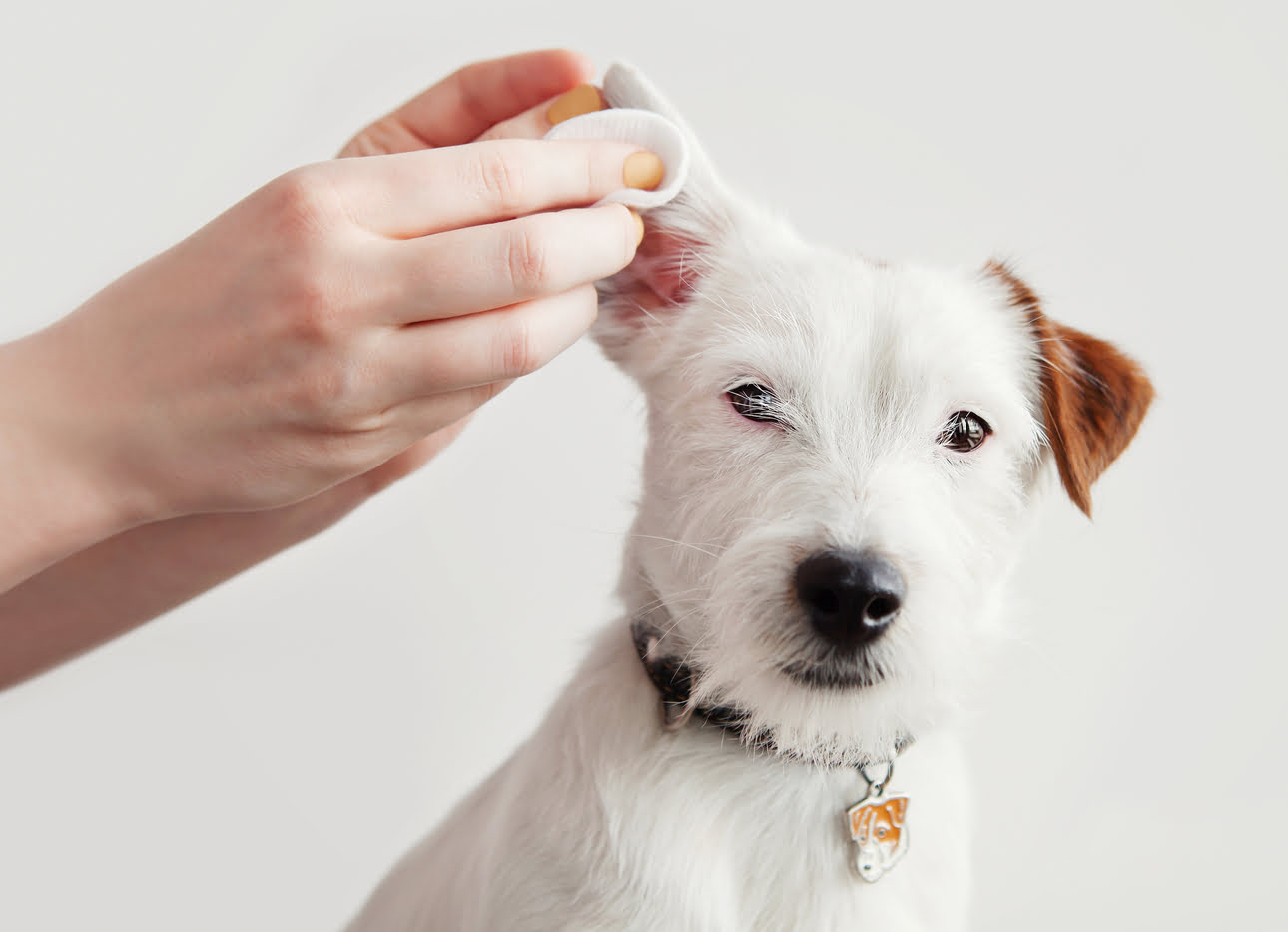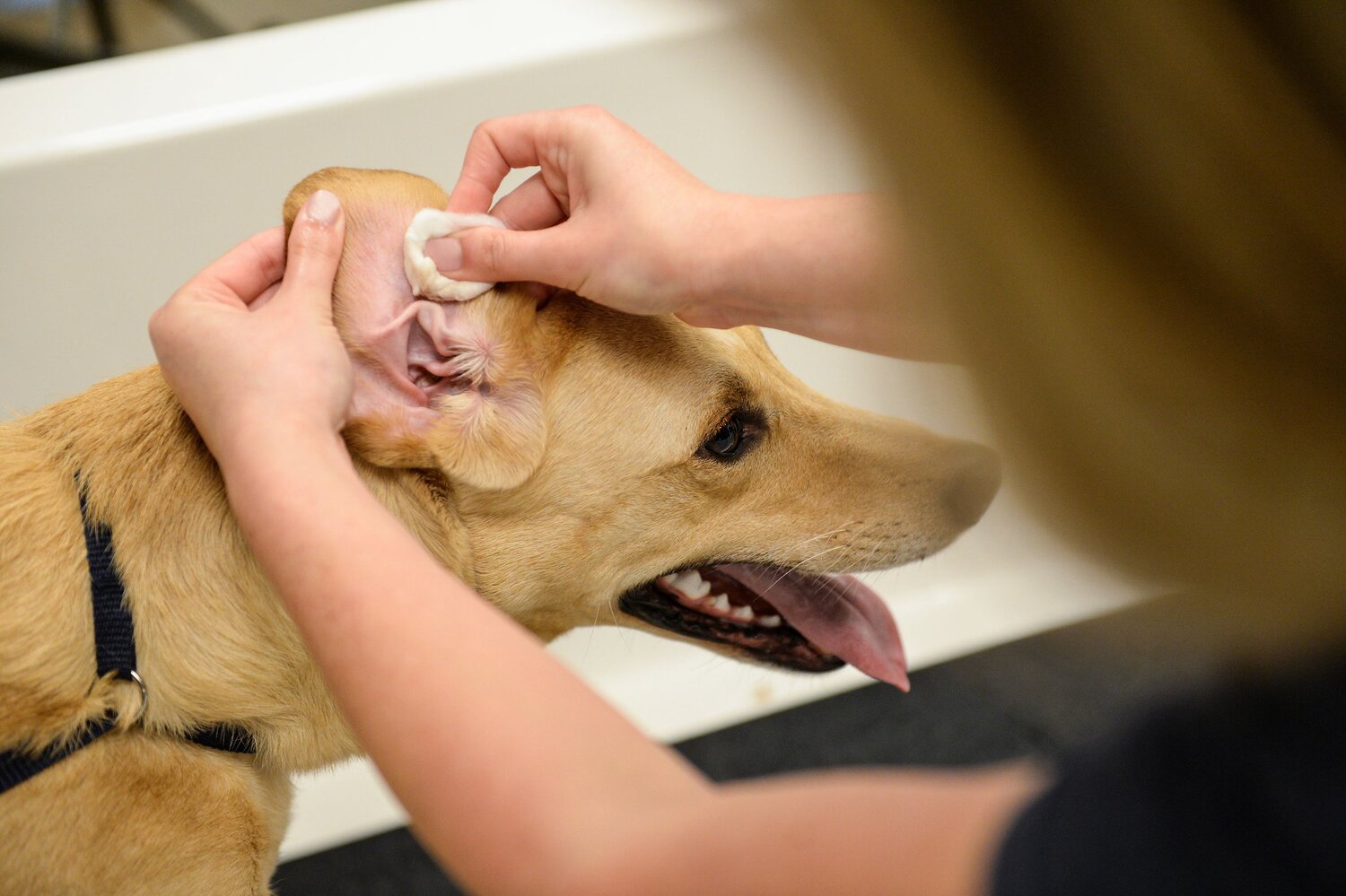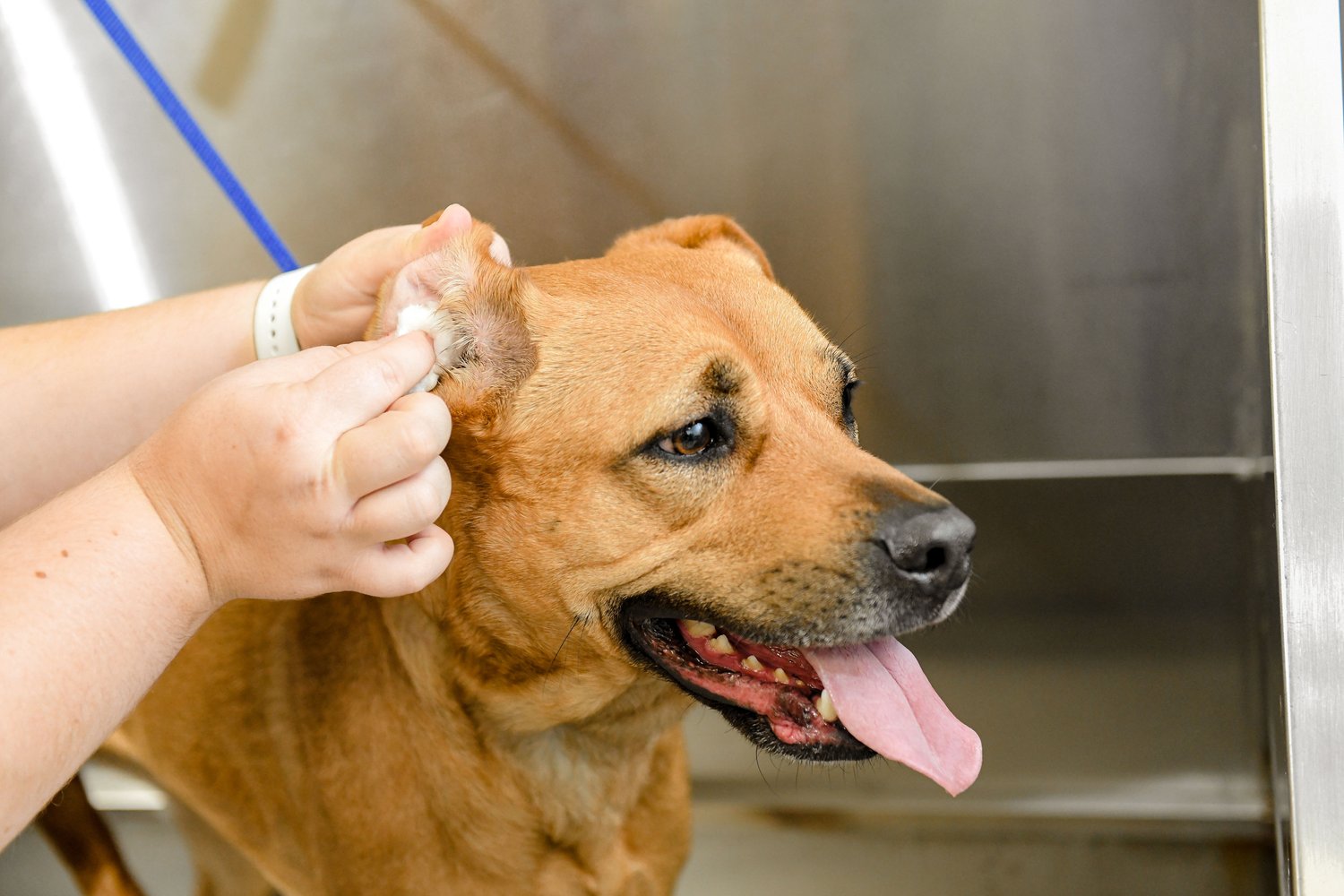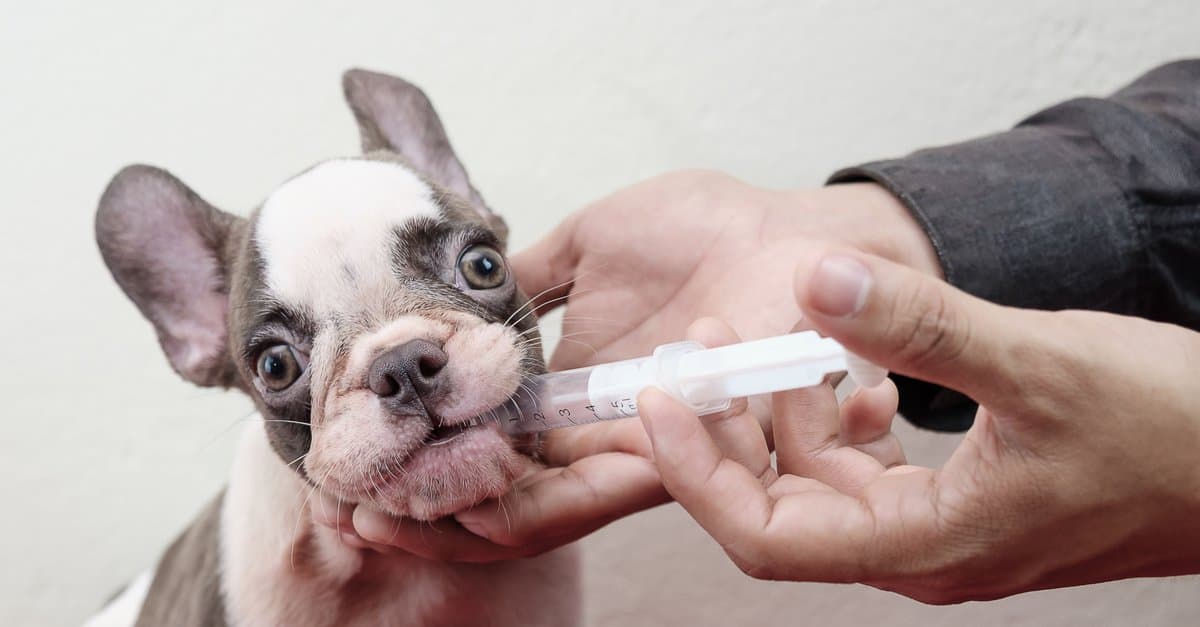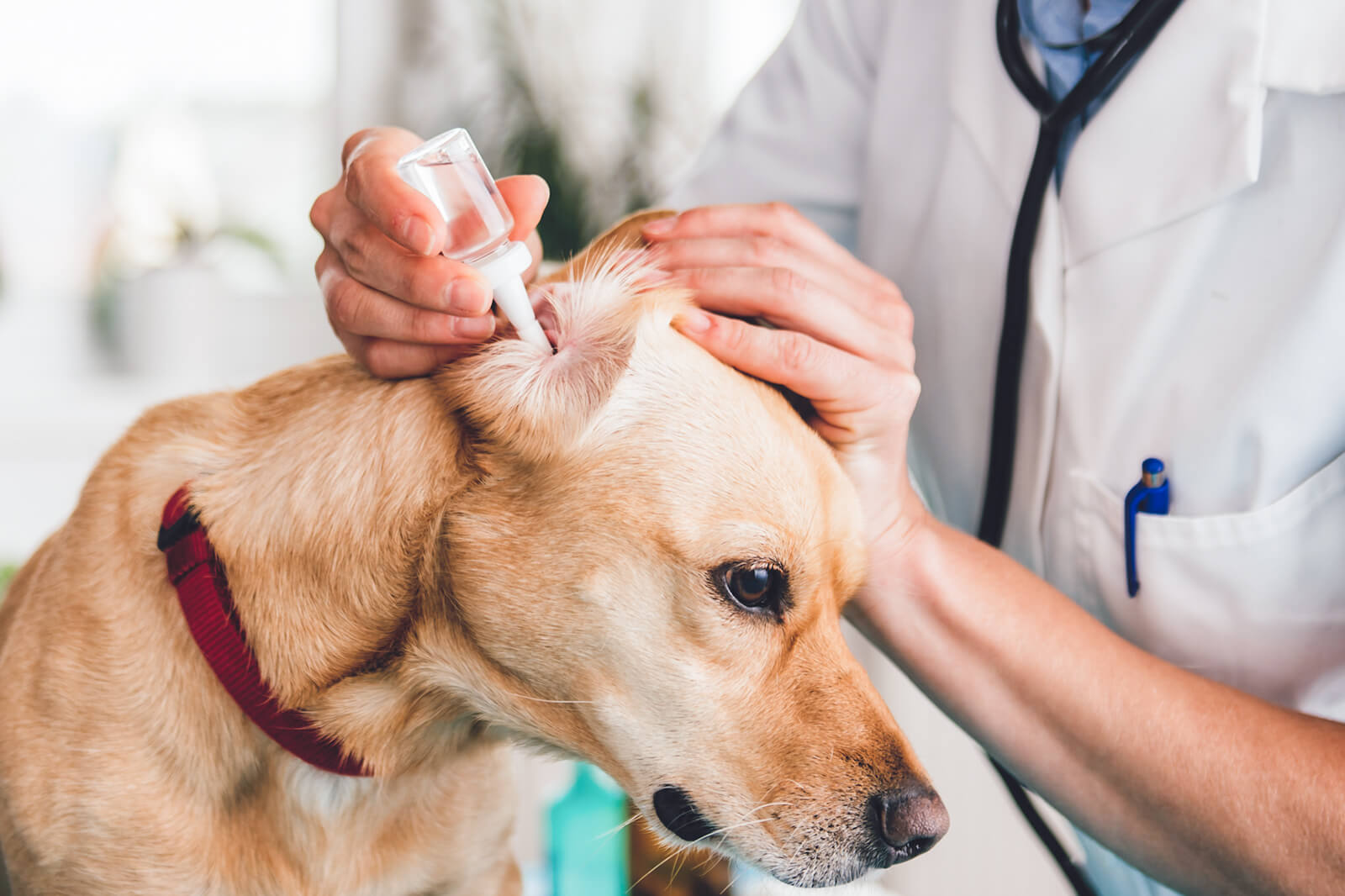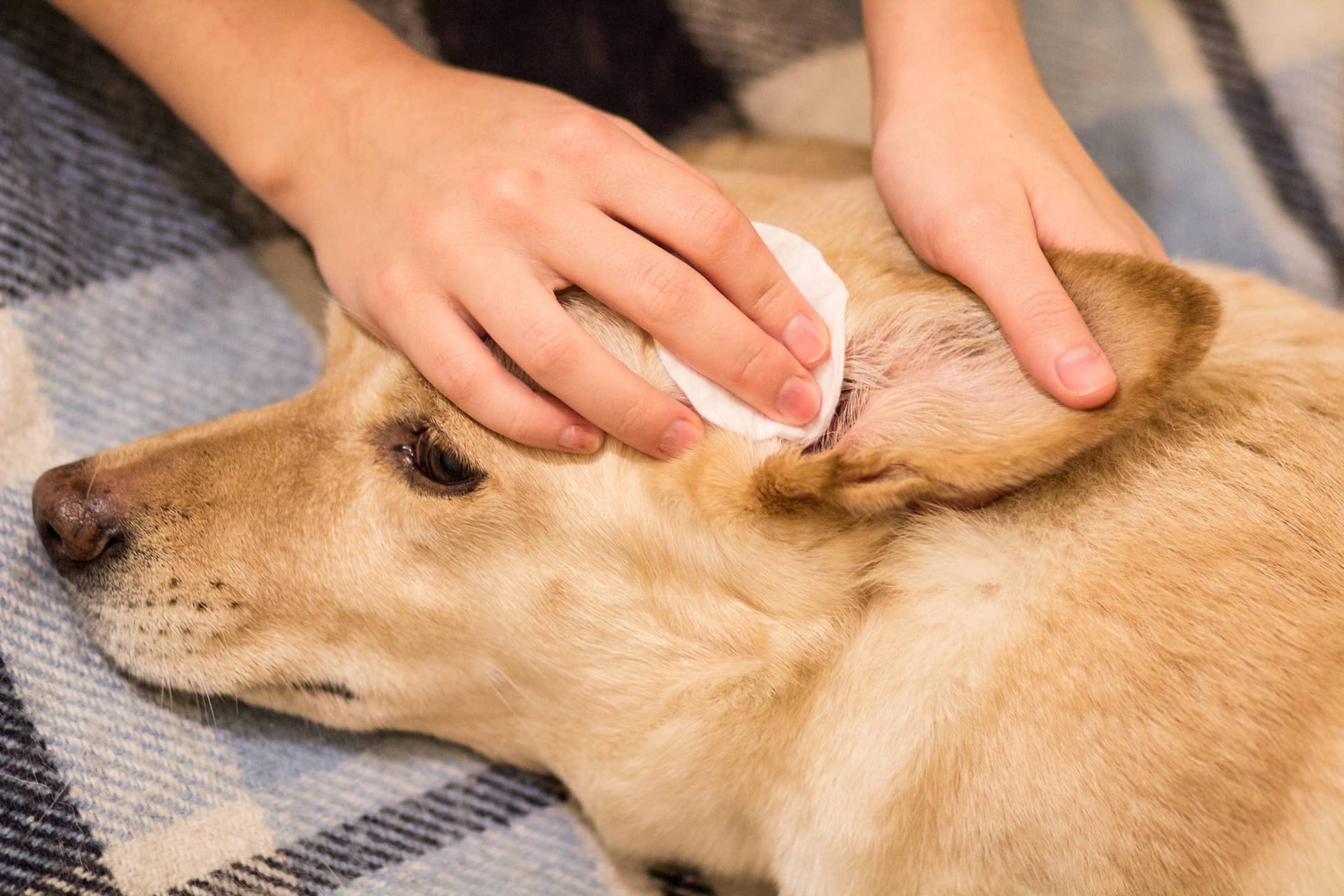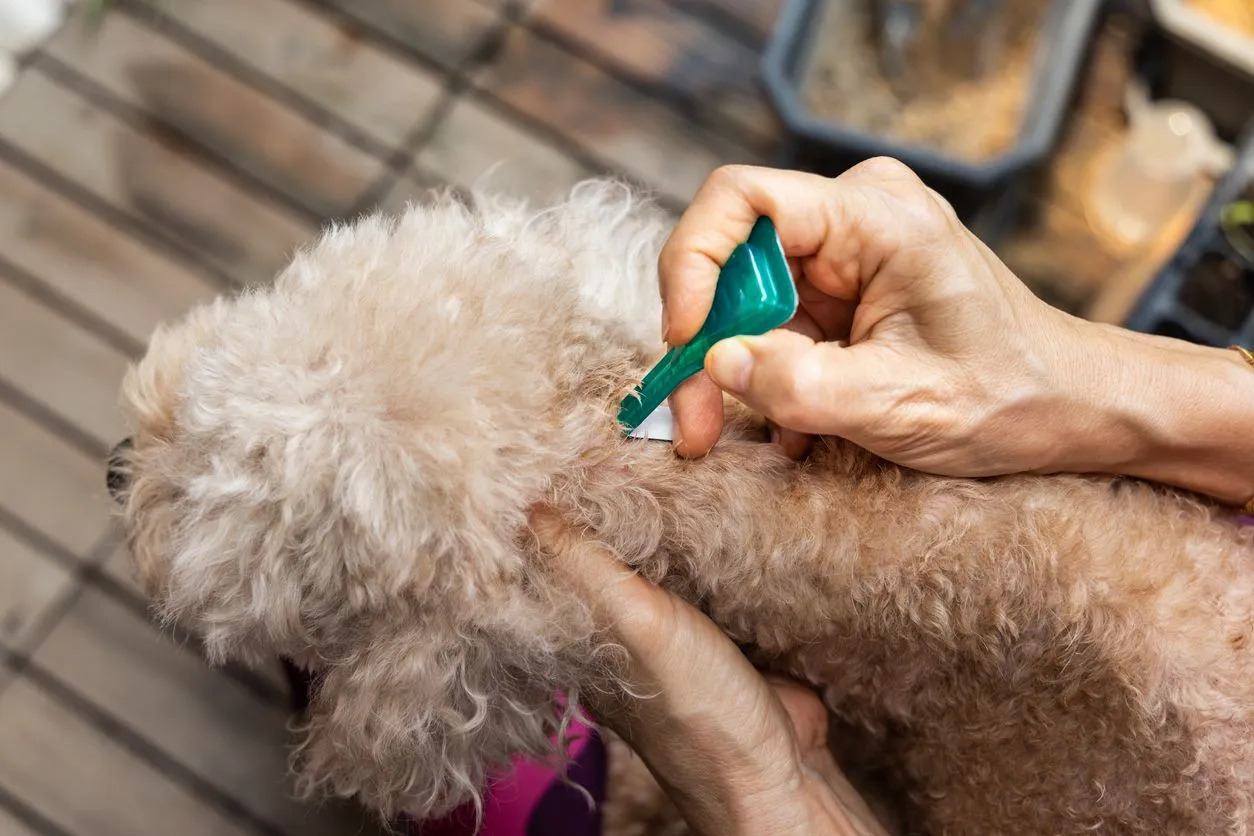Home>Health & Wellness>Common Health Issues>Eye and Ear Health>How To Prevent Ear Infections In Dogs
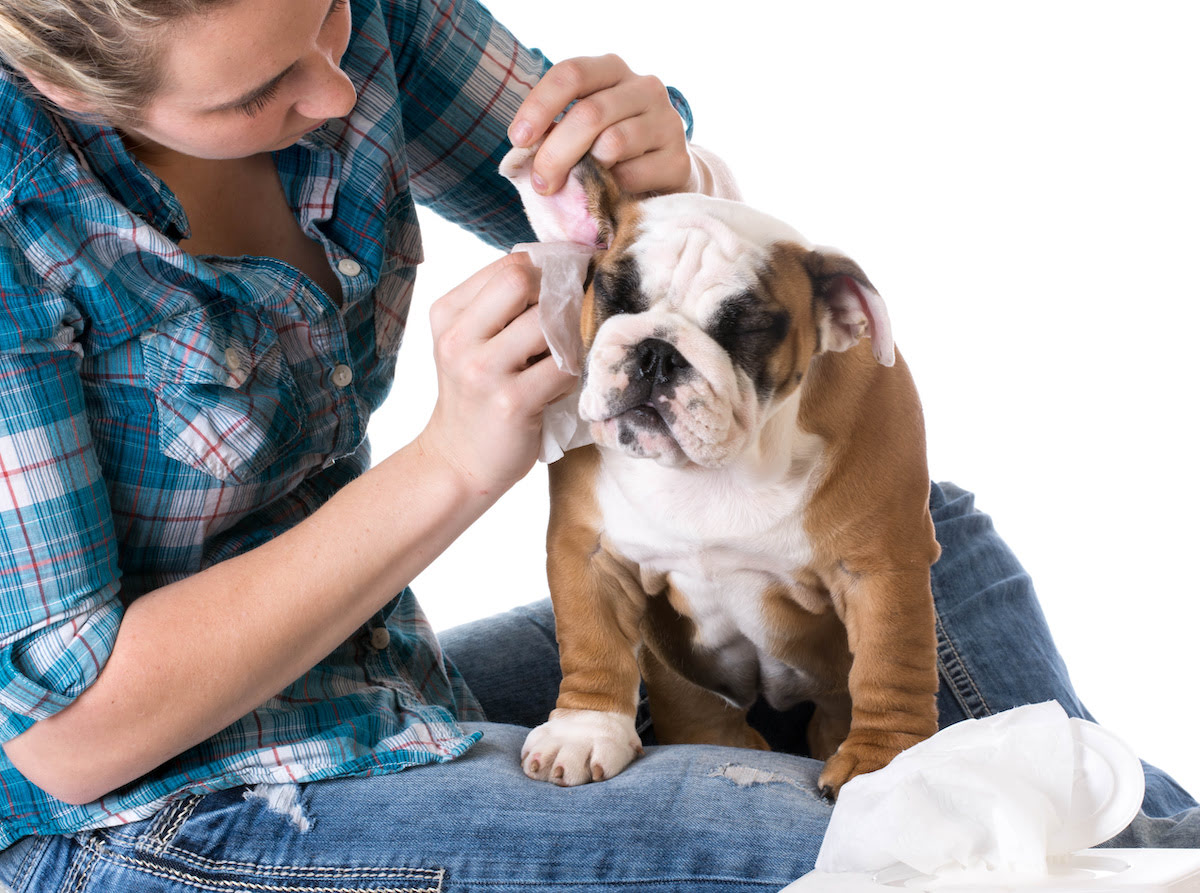

Eye and Ear Health
How To Prevent Ear Infections In Dogs
Published: February 15, 2024
Learn how to maintain your dog's eye and ear health to prevent infections. Expert tips and advice for keeping your pet healthy and happy.
(Many of the links in this article redirect to a specific reviewed product. Your purchase of these products through affiliate links helps to generate commission for Pawsomeoldies.com, at no extra cost. Learn more)
Table of Contents
Introduction
Ear infections are a common health issue that can affect our beloved canine companions. Just like humans, dogs can experience discomfort and pain due to ear infections, making it essential for pet owners to be aware of the causes, symptoms, and preventative measures. By understanding the factors that contribute to ear infections in dogs and implementing proactive strategies, pet owners can help their furry friends maintain optimal ear health.
In this comprehensive guide, we will delve into the world of ear infections in dogs, shedding light on the common causes, signs, and symptoms of this condition. Furthermore, we will explore effective preventative measures that can be taken to minimize the risk of ear infections in dogs. Whether you are a seasoned pet owner or a first-time dog parent, this article aims to equip you with the knowledge and tools necessary to safeguard your dog's ear health and overall well-being.
Understanding the nuances of ear infections in dogs is crucial for providing the best possible care for our four-legged friends. By taking a proactive approach to ear health, pet owners can ensure that their dogs lead happy, healthy, and comfortable lives. Let's embark on this journey to explore the world of ear infections in dogs and discover the proactive steps that can be taken to prevent this common ailment.
Understanding Ear Infections in Dogs
Ear infections in dogs, also known as otitis externa, refer to the inflammation of the outer ear canal. This condition can be uncomfortable and distressing for our canine companions, often leading to symptoms such as itching, redness, swelling, and discharge. Understanding the underlying factors that contribute to ear infections in dogs is essential for implementing effective preventative measures and providing timely care.
The anatomy of a dog's ear plays a significant role in predisposing them to ear infections. Unlike humans, dogs have a vertical ear canal that is more prone to moisture retention. This creates an ideal environment for the overgrowth of yeast and bacteria, leading to ear infections. Additionally, dogs with floppy ears, such as Cocker Spaniels and Basset Hounds, are more susceptible to ear infections due to reduced air circulation within the ear canal.
Furthermore, allergies can significantly contribute to the development of ear infections in dogs. Allergic reactions to environmental factors, such as pollen, dust mites, or certain foods, can lead to inflammation and increased production of wax in the ear canal. This creates a conducive environment for the proliferation of microorganisms, ultimately resulting in an ear infection.
In some cases, underlying medical conditions, such as hypothyroidism or autoimmune diseases, can compromise a dog's immune system, making them more susceptible to ear infections. Additionally, the presence of foreign objects, excessive ear wax, or the use of inappropriate ear-cleaning products can also contribute to the onset of ear infections in dogs.
Understanding the predisposing factors and potential causes of ear infections in dogs empowers pet owners to take proactive measures in preventing this common ailment. By recognizing the unique vulnerabilities of a dog's ear anatomy and addressing potential allergens and irritants, pet owners can play a pivotal role in safeguarding their dog's ear health.
In the following sections, we will delve deeper into the common causes, signs, and symptoms of ear infections in dogs, providing valuable insights to help pet owners identify and address this prevalent health issue in their canine companions.
Common Causes of Ear Infections
Ear infections in dogs can stem from a variety of factors, ranging from anatomical predispositions to environmental and medical triggers. Understanding these common causes is crucial for pet owners to take proactive steps in preventing the onset of ear infections in their furry friends.
-
Anatomy and Ear Structure: The unique anatomy of a dog's ear, characterized by a vertical ear canal, can predispose them to ear infections. This structure hinders natural drainage and ventilation, leading to moisture retention and creating an ideal environment for the overgrowth of yeast and bacteria.
-
Allergies: Dogs can experience allergic reactions to environmental factors such as pollen, dust mites, and certain foods. Allergies can trigger inflammation and excessive wax production in the ear canal, contributing to the development of ear infections.
-
Foreign Objects: The presence of foreign objects, such as grass seeds or small debris, in a dog's ear can lead to irritation and potential infection. It is essential for pet owners to regularly inspect and clean their dog's ears to prevent the accumulation of foreign objects.
-
Excessive Ear Wax: Dogs with a predisposition to overproduce ear wax are at a higher risk of developing ear infections. Excessive ear wax can create a favorable environment for the growth of microorganisms, leading to inflammation and infection.
-
Moisture and Humidity: High levels of moisture and humidity, particularly in warm climates, can contribute to the proliferation of yeast and bacteria in a dog's ear canal. This is especially prevalent in dogs that enjoy swimming or have frequent exposure to water.
-
Inappropriate Ear Cleaning: The use of harsh or inappropriate ear-cleaning products can disrupt the natural balance of the ear canal, leading to irritation and potential infection. It is essential for pet owners to use gentle, vet-recommended ear cleaners and techniques.
-
Underlying Medical Conditions: Dogs with underlying medical conditions, such as hypothyroidism or autoimmune diseases, may have compromised immune systems, making them more susceptible to ear infections. Addressing these underlying conditions is crucial in preventing recurrent ear infections.
By recognizing these common causes of ear infections in dogs, pet owners can take proactive measures to minimize the risk of this prevalent health issue. From regular ear inspections to addressing potential allergens and irritants, understanding these causes empowers pet owners to prioritize their dog's ear health and well-being.
Signs and Symptoms of Ear Infections
Identifying the signs and symptoms of ear infections in dogs is crucial for timely intervention and effective management of this common health issue. While dogs may not be able to verbally communicate their discomfort, attentive pet owners can recognize subtle changes in their pet's behavior and physical condition that may indicate the presence of an ear infection.
Common Signs and Symptoms:
-
Ear Scratching and Head Shaking: Dogs with ear infections often exhibit persistent scratching of the affected ear(s) and vigorous head shaking. This behavior is a result of the discomfort and irritation caused by the infection.
-
Odor and Discharge: A foul odor emanating from the ears, accompanied by the presence of abnormal discharge, such as pus or wax, can indicate the presence of an ear infection. The discharge may appear dark, brown, or even bloody in some cases.
-
Redness and Swelling: Inflamed and swollen ear canals, often accompanied by redness, are common indicators of an ear infection in dogs. The visible inflammation may extend to the outer ear and surrounding tissues.
-
Pain and Sensitivity: Dogs with ear infections may display signs of pain and sensitivity when their ears are touched or manipulated. They may tilt their heads to one side or exhibit signs of discomfort when the affected ear is examined.
-
Balance and Coordination Issues: In severe cases, ear infections can affect a dog's balance and coordination. Pet owners may observe their dogs experiencing difficulty maintaining their equilibrium or displaying unsteady movements.
-
Changes in Behavior: Dogs suffering from ear infections may exhibit changes in behavior, such as irritability, restlessness, or withdrawal. They may also vocalize distress or discomfort, indicating their unease.
-
Visible Discomfort During Ear Inspection: When examining a dog's ears, pet owners may notice signs of visible discomfort or pain in the affected ear(s). Dogs may pull away, whimper, or exhibit signs of agitation during the inspection.
By being vigilant and attentive to these signs and symptoms, pet owners can promptly seek veterinary care and intervention, ensuring that their canine companions receive the necessary treatment and relief from ear infections. Early detection and proactive management are essential in mitigating the discomfort and potential complications associated with ear infections in dogs.
Preventative Measures
Preventing ear infections in dogs involves a proactive approach that encompasses various preventative measures aimed at maintaining optimal ear health and minimizing the risk of infection. By implementing these strategies, pet owners can create a supportive environment for their canine companions, reducing the likelihood of ear infections and promoting overall well-being.
Regular Ear Cleaning
One of the fundamental preventative measures for ear infections in dogs is regular ear cleaning. This practice helps remove excess wax, debris, and moisture from the ear canal, reducing the likelihood of microbial overgrowth. Pet owners should use gentle, vet-recommended ear cleaners and follow proper cleaning techniques to avoid causing irritation or disrupting the natural balance of the ear canal. Regular ear inspections should also be conducted to identify any signs of redness, swelling, or abnormal discharge, prompting timely intervention if necessary.
Diet and Nutrition
A balanced and nutritious diet plays a crucial role in supporting a dog's overall health, including their immune system and skin condition. By providing high-quality, well-balanced meals and incorporating essential nutrients such as omega-3 fatty acids, pet owners can help strengthen their dog's immune response and maintain healthy skin and coat. Additionally, identifying and addressing any food allergies or sensitivities can mitigate the risk of allergic reactions that may contribute to ear infections.
Regular Vet Check-ups
Routine veterinary check-ups are essential for monitoring a dog's ear health and addressing any underlying issues that may predispose them to ear infections. Veterinarians can conduct thorough ear examinations, provide guidance on proper ear care, and identify early signs of potential ear problems. Additionally, they can recommend suitable preventive measures tailored to the specific needs of individual dogs, taking into account factors such as breed, ear anatomy, and environmental influences.
Read more: How To Treat Dog Ear Infection With Steroids
Environmental Considerations
Environmental factors, such as moisture, humidity, and allergens, can significantly impact a dog's susceptibility to ear infections. Pet owners should take proactive steps to minimize exposure to excessive moisture, especially after swimming or bathing, by thoroughly drying their dog's ears. Additionally, reducing exposure to potential allergens, such as pollen or dust, can help mitigate allergic reactions that may contribute to ear inflammation and infection.
By incorporating these preventative measures into their dog care routine, pet owners can actively contribute to the maintenance of their dog's ear health and well-being. Proactive ear care, coupled with a holistic approach to overall health and environmental management, can significantly reduce the incidence of ear infections in dogs, ensuring that they lead comfortable and thriving lives.
Regular Ear Cleaning
Regular ear cleaning is a fundamental aspect of proactive ear care for dogs, playing a pivotal role in preventing the onset of ear infections. By incorporating regular ear cleaning into a dog's grooming routine, pet owners can effectively manage ear hygiene and minimize the risk of microbial overgrowth and inflammation within the ear canal.
The process of ear cleaning involves the removal of excess wax, debris, and moisture from the ear canal, thereby creating an environment less conducive to the proliferation of yeast and bacteria. It is essential for pet owners to use gentle, vet-recommended ear cleaners specifically formulated for dogs. Harsh or inappropriate cleaning products can disrupt the natural balance of the ear canal, leading to irritation and potential infection.
When initiating the ear cleaning process, pet owners should approach the task with patience and gentleness, ensuring that their dog feels comfortable and at ease. It is advisable to gently hold the dog's head steady while delicately lifting the ear flap to expose the ear canal. A small amount of the vet-recommended ear cleaner should then be applied, allowing it to penetrate the ear canal before massaging the base of the ear to dislodge any accumulated debris.
Following the application of the ear cleaner, pet owners can gently wipe the visible part of the ear canal using a soft, clean cloth or cotton ball. Care should be taken to avoid inserting any cleaning materials deep into the ear canal, as this can potentially cause injury or discomfort. Regular ear inspections should also be conducted during the cleaning process, allowing pet owners to identify any signs of redness, swelling, or abnormal discharge that may indicate the presence of an ear infection.
The frequency of ear cleaning may vary depending on the individual dog's ear anatomy, activity level, and predisposition to ear issues. Dogs that are prone to excessive wax production or have a history of ear infections may require more frequent cleaning, while others may maintain optimal ear health with less frequent cleaning. Consulting with a veterinarian can provide valuable guidance on the appropriate ear cleaning schedule tailored to the specific needs of a dog.
By incorporating regular ear cleaning into their dog care routine, pet owners can actively contribute to the maintenance of their dog's ear health and overall well-being. This proactive approach, coupled with attentive monitoring and timely intervention, can significantly reduce the likelihood of ear infections, ensuring that dogs enjoy comfort and optimal ear health.
Diet and Nutrition
Diet and nutrition play a pivotal role in supporting a dog's overall health, including their immune system and skin condition. A balanced and nutritious diet is essential for maintaining optimal ear health and minimizing the risk of ear infections in dogs. By providing high-quality, well-balanced meals, pet owners can ensure that their canine companions receive essential nutrients that contribute to a robust immune response and healthy skin and coat.
Incorporating essential nutrients such as omega-3 fatty acids into a dog's diet can have a profound impact on their overall well-being, including their susceptibility to ear infections. Omega-3 fatty acids possess anti-inflammatory properties, which can help mitigate the inflammatory response associated with allergic reactions, a common predisposing factor for ear infections in dogs. By supporting a healthy inflammatory response, omega-3 fatty acids contribute to maintaining the integrity of the skin and ear tissues, reducing the likelihood of irritation and infection.
Identifying and addressing any food allergies or sensitivities is also crucial in mitigating the risk of allergic reactions that may contribute to ear infections. Certain ingredients in commercial dog foods, such as grains or specific protein sources, can trigger allergic responses in some dogs, leading to skin inflammation and potential ear issues. Pet owners should work closely with their veterinarians to identify and eliminate potential allergens from their dog's diet, ensuring that their nutritional intake supports optimal ear health.
Moreover, maintaining a healthy body condition through proper nutrition is essential for supporting a dog's overall immune function. A well-nourished immune system is better equipped to fend off potential microbial invaders, reducing the likelihood of ear infections. By providing a diet that meets their dog's specific nutritional needs, pet owners can contribute to the maintenance of a strong and resilient immune system, enhancing their dog's ability to combat potential ear-related challenges.
In addition to addressing specific nutritional needs, ensuring that a dog has access to clean, fresh water at all times is essential for supporting overall health, including proper hydration and the maintenance of optimal ear moisture levels. Adequate hydration contributes to the natural self-cleaning mechanisms of the ear canal, helping to flush out debris and maintain a healthy ear environment.
By prioritizing diet and nutrition as integral components of proactive ear care, pet owners can actively contribute to the maintenance of their dog's ear health and overall well-being. A holistic approach to nutrition, coupled with attentive monitoring and regular veterinary guidance, can significantly reduce the incidence of ear infections in dogs, ensuring that they lead comfortable and thriving lives.
Regular Vet Check-ups
Regular veterinary check-ups are essential for monitoring a dog's ear health and addressing any underlying issues that may predispose them to ear infections. These routine examinations provide an opportunity for veterinarians to conduct thorough ear inspections, assess the overall condition of the ears, and identify early signs of potential ear problems. By incorporating regular vet check-ups into a dog's healthcare regimen, pet owners can proactively safeguard their canine companions against the onset of ear infections and ensure their long-term well-being.
During a veterinary check-up, the veterinarian will carefully examine the dog's ears, assessing the external ear canal, ear flap, and surrounding tissues for any signs of redness, swelling, discharge, or abnormal odor. This comprehensive evaluation allows for the early detection of potential ear issues, enabling timely intervention and treatment. Additionally, veterinarians may use specialized tools, such as an otoscope, to visualize the internal structures of the ear canal, identifying any abnormalities or signs of inflammation that may indicate an underlying infection.
In addition to visual inspections, veterinarians can provide guidance on proper ear care practices tailored to the specific needs of individual dogs. This may include recommendations for regular ear cleaning techniques, appropriate ear cleaning products, and strategies for managing environmental factors that may impact a dog's ear health. By leveraging the expertise of veterinarians, pet owners can gain valuable insights into proactive measures that can be taken to minimize the risk of ear infections and promote optimal ear hygiene.
Furthermore, routine vet check-ups offer an opportunity for pet owners to discuss any concerns or observations related to their dog's ear health. Whether it's a history of recurrent ear infections, changes in ear behavior, or environmental factors that may impact ear health, open communication with the veterinarian allows for a collaborative approach to addressing potential predisposing factors and implementing preventive strategies. This proactive dialogue fosters a comprehensive understanding of a dog's individual ear health needs, empowering pet owners to take informed actions in supporting their dog's well-being.
By prioritizing regular vet check-ups as an integral part of proactive ear care, pet owners demonstrate a commitment to the ongoing monitoring and maintenance of their dog's ear health. This collaborative approach, coupled with the expertise and guidance of veterinarians, serves as a cornerstone in preventing ear infections and ensuring that dogs receive the necessary support for optimal ear hygiene and overall health.
Conclusion
In conclusion, the proactive management of ear health is paramount in ensuring the well-being of our canine companions. Ear infections, though common, can be effectively mitigated through a combination of attentive care, preventive measures, and regular veterinary oversight. By understanding the predisposing factors, common causes, signs, and symptoms of ear infections in dogs, pet owners can proactively address potential challenges and prioritize their dog's ear health.
The unique anatomy of a dog's ear, coupled with environmental factors and underlying medical conditions, underscores the importance of tailored preventive strategies. From regular ear cleaning using vet-recommended products to addressing potential allergens and irritants, pet owners can create a supportive environment that minimizes the risk of ear infections. Furthermore, a balanced and nutritious diet, enriched with essential nutrients such as omega-3 fatty acids, contributes to a robust immune response and healthy skin, reducing the likelihood of allergic reactions that may lead to ear issues.
Regular veterinary check-ups serve as a cornerstone in the proactive management of ear health, allowing for thorough ear inspections, early detection of potential problems, and collaborative guidance on preventive measures. The expertise and insights provided by veterinarians empower pet owners to make informed decisions and take proactive steps in safeguarding their dog's ear health.
By incorporating these proactive measures into their dog care routine, pet owners demonstrate a commitment to the ongoing monitoring and maintenance of their dog's ear health. This holistic approach not only reduces the incidence of ear infections but also contributes to the overall well-being and comfort of our beloved canine companions.
In essence, the prevention of ear infections in dogs is a multifaceted endeavor that encompasses attentive care, informed decision-making, and collaborative veterinary support. By prioritizing proactive ear care, pet owners can ensure that their dogs enjoy optimal ear health, allowing them to thrive and experience the joy of a comfortable and fulfilling life.
